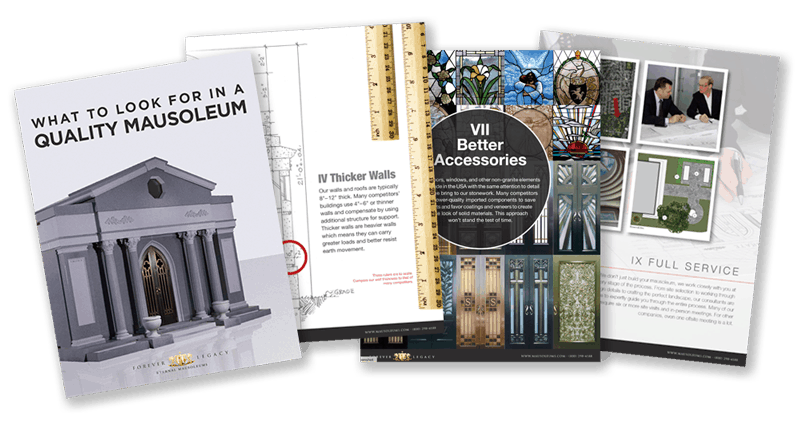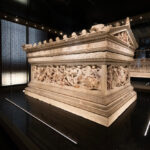Drake Mausoleum
Egyptian
Flying sphinxes stand ready to swoop down on unwelcome visitors at the Drake family mausoleum. As with most Egyptian Revival architecture, a little Greek and perhaps a little Classical architecture is thrown in for good measure. In Egyptian mythology, these stone guardians or Shesep-ankth (living statues), were always male, usually a lion’s body and a man’s head. In Greek mythology however, sphinx were female. Most Egyptian Revival mausolea sport the Greek variety because of their association with maternal care.
Further relieving the cold, hard granite are the vulture wing and sun design carved above the entry (more maternal care symbolism), rounded corners of the mausoleum and lotus blossoms on the door and etched into the pilasters.
A number of Drakes and members of their extended family are entombed inside, including Thomas Drake Martinez Cardeza and his mother Mrs. Charlotte Drake Martinez Cardeza. Thomas and Charlotte were survivors of an “unsinkable” ship that ran into an iceberg in April of 1912. Mrs. Cardeza’s brush with death as a passenger on the Titanic was just another adventure for her. Her big game adventures in Asia and Africa were frequently described by newspapers of the day.
The Drake mausoleum was originally at Laurel Hill Cemetery, but both bodies and mausoleum were moved to West Laurel Hill.
Text and photo © Douglas Keister Visit Doug’s Author Page
[address cemetery=”West Laurel Hill Cemetery” street=”Lower Merion” city=”Bala Cynwyd” state=”Pennsylvania” zip=”19004″]

